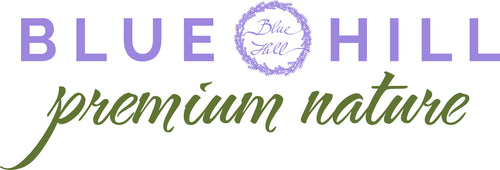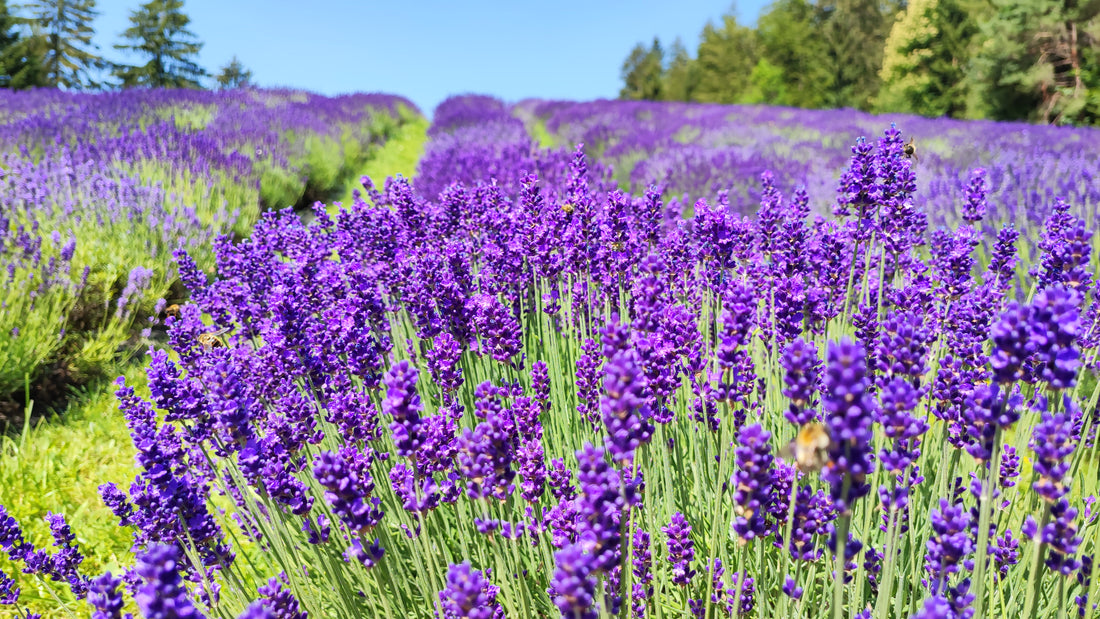You've probably already noticed that not all lavenders are created equal. They differ in the size of the bush, the size of the flowers, their color, shape and smell. Roughly 5 types of lavender are widespread, and each of them has many varieties. How can you tell if a lavender that blooms beautifully and profusely is suitable for use in cooking? The easiest way to make sure of this is to hold the flowers of this lavender (dry or fresh) between your fingers and smell it. If the lavender has a floral, honeyed, sweet smell, the flowers will most likely work well in cooking, but if you also detect a sharpness similar to peppermint in the smell, then a large amount of camphor has been released from the flowers, which indicates that your lavender is not the best choice for drinks or dishes with lavender. Despite the fact that camphor irritates the stomach, in such a small amount it will not be able to particularly endanger your health, but your dish will surely taste unpleasant.
Species in brief
True lavender ( Lavandula Angustifolia )
This most recognizable and widespread type of lavender can also be found under the names narrow-leaved lavender, English lavender or ordinary lavender. It is a 40 cm to 90 cm tall semi-shrub with flowers from dark blue to light purple. It blooms up to three times a year, depending on the climate, in our country it blooms twice. The first time at the end of June and the second time in mid-September. The length and shape of the inflorescence depends on the variety, but what they all have in common is that they smell intoxicating, almost honey-sweet. Real lavender is a spice, herb and fragrance, so regardless of the variety, you can use it for culinary purposes without any worries, but if we choose the right variety, the lavender will only be tastier.
The picture from our plantation shows the flowering of the hitcote blue variety. Munstead, imperial gem and vera, which is the most basic form of the plant, also bloom in our field. In addition to them, we also know the varieties malliette, royal velvet, hitcote and many others.

True lavender is also highly valued as a fragrance, its extracts have many positive effects on our body, which is why they are popular in the production of cosmetic products .
You can read more about real lavender here .French lavender (Lavandula Dentata)

It got its name (dentata) from the toothed leaves with a rosemary scent. It originates from southern and eastern Spain, but today it is found throughout the Mediterranean. Depending on the climate, it blooms throughout the year, all it needs is warmth and enough light. The flowers are not very aromatic, but they are very colorful. It is a 30 to 90 cm tall shrub with medium-long stems. I don't know what it tastes like, because I haven't tried it, and it is not listed as suitable for consumption in the literature.
Spanish lavender ( Lavandula Stoechas)

This 45 to 60 cm tall lavender is also referred to in some sources as French lavender, it is also known as tufted lavender and is the most obviously different of all the species. The cone-like flowers with petals at the top are the oiliest, but the oil also contains the most camphor. It blooms almost continuously from late spring to late autumn. I have not tried to enjoy this type myself, but based on the smell, I assume that it has an unpleasant taste.
Portuguese lavender ( Lavandula Latifolia )

In Slovenia, this lavender is also called broad-leaved lavender, it is typical of the western Mediterranean and is slightly more aromatic than true lavender. It blooms on long stems with long inflorescences in a pale purple color. At the same time as the main flower, two side flowers are also removed. It grows between 30 and 90 cm. Due to the high camphor content (40-60%), it is not suitable for consumption.
Lavandin ( Lavandula x intermedia )

A hybrid or cross between narrow-leaved and broad-leaved lavender is the most industrially widespread species in the world. It is an extremely resistant plant, between 50 and 100 cm tall, which tolerates long periods of drought without any problems. As a rule, it blooms once a year. Flowers on long stems have up to 10 cm long, dense inflorescences, as with broad-leaved lavender, side flowers are also observed here. It is widespread mainly because of the high content of essential oil, which, like the flowers, has a sharp smell. For this purpose, mainly the sorto grosso is grown, but there are also some types of lavender that work well in the kitchen, but in most cases the consumption of this lavender is not recommended. Unfortunately, this plant often appears in food products such as chocolates and syrups, and the result of this is that people who have tried it never want to taste lavender again.
To summarize. The most important thing is to check which botanical name is indicated on the seedling or product when choosing a sapling or lavender product that you want to enjoy. For seedlings where there is no such name, it most often turns out to be a hybrid, which, as said, is not suitable for consumption, but you can make a beautiful, rich bouquet out of it. If you are interested in what you can prepare from real lavender, read the second part of this post, which you can find on our blog, and check out the other recipes that I publish for you on the Blue Hill blog.

